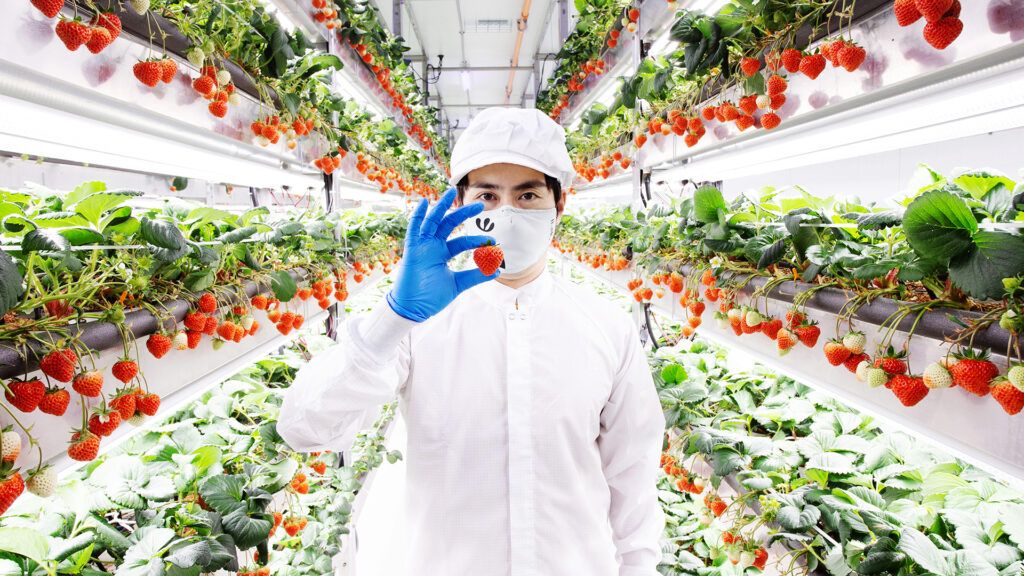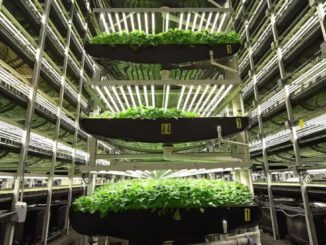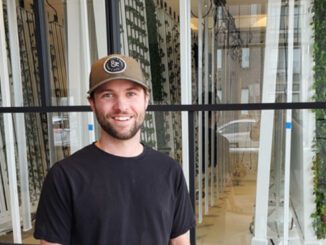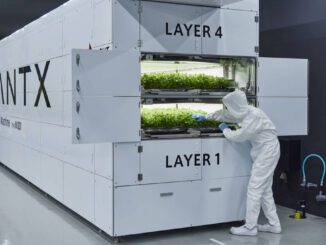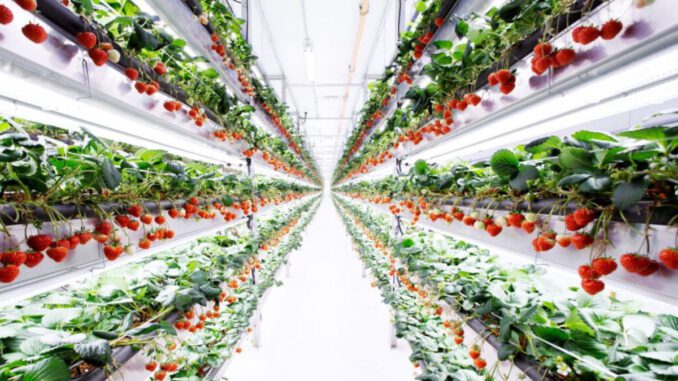
Learning from Japan’s mistakes, Oishii CEO “hasn’t spent a dime” on leafy greens as ultra-premium strawberries thrive
Indoor Farming Market Survival | Jennifer Marston |
“I knew the exact same thing was going to happen. People were going to get really excited about the technology because it’s sustainable and it’s very futuristic. But then people would struggle to prove that it’s a viable business model.”
Hiroko Koga, CEO of US-based vertical farming startup Oishii is comparing the vertical farming industry in Japan 10 years ago to the recent spate of farm closures, failures, and staff layoffs in the US and Europe.
He adds that today’s situation was “completely anticipated.”
“I saw this whole cycle in Japan already 10 years ago. In the early 2000s, Japan had a few hundred vertical farms across the country — probably more than the number of vertical farms that exist today in the US. Almost all of them closed. People thought it was a fascinating technology, but they realized that the unit economics didn’t work.”
This is why Oishii, in its five-year history, hasn’t “spent a dime” on leafy greens. Instead, the company focuses on strawberries and today it has launched another variety to its offering — the Koyo berry.
IMAGE:Oishii co-founder & CEO Hiroki Koga. Image credit: Oishii
Cracking the pollination puzzle
Growing strawberries is still uncommon in vertical farming. Growing them at scale is practically unheard of.
Nonetheless, Koga, a native of Japan, opted for the fruit over leafy greens when he started Oishii in 2017.
“Vertical farming was commercialized in Japan before anywhere else,” he says, adding that he was a consultant in that industry about 10 years ago. “I learned things the hard way looking at a lot of Japanese companies struggle by starting with leafy greens.”
“We started with strawberries because we felt it was a high-value-add crop, a stronger cash flow and a better business model. It was also one of the hardest crops to grow at a steady pace and at a consistent quality.”
The key is in pollination, which Koga says is one of Oishii’s main differentiators.
Leafy greens don’t require pollination, while flowering crops like strawberries, tomatoes, and melons do.
But artificial lighting in the vertical farm makes the setting difficult for bees to navigate. Koga says this is one of the biggest reasons vertical farms haven’t progressed very far with flowering crops.
“If you don’t use bees and you rely on manual pollination, the unit economics will never make sense.”
While Koga doesn’t delve too deeply into how the company has changed this, he says Oishii has heavily invested R&D into the bee issue. “We really wanted to crack the code to do perfect pollination indoors. When I say ‘perfect pollination,’ it’s not just 30% pollination success ratio or 60%; it has to be 90% or more success in order to make sense of the unit economics.”
The company uses a mix of AI, data and visual recognition to monitor its farms and achieve this pollination success. The technology aspect is critical. “Without the technology, you’re not going to be able to turn this business into a profitable model,” says Koga.
That said, pollination is only one element at play.
“Another problem you can solve [with technology] is how to keep producing strawberries throughout the year. If you can do that, it means you’re generating three times more cashflow compared to four months outdoors.”
Oishii’s technology also addresses the problem of keeping strawberry plants alive for more than 12 months without pesticides and other inputs.
All of these things rely on one another to produce a consistent, high-quality crop of indoor strawberries.
“That’s the biggest difference between where we stand today versus other startups that say ‘we figured out how to grow strawberries,’” says Koga. “Anyone can grow a strawberry under a LED light. Can they do it at a scale and at profit is the biggest question mark?”
‘The next standard in agriculture’
Oishii introduced its Omakase berry in 2018 to fanfare and Tesla comparisons. Based on the same berry grown in the Japanese alps, the Omakase introduced a new strawberry experience for US consumers. “In terms of the texture, the Omakase is softer — it’s probably the softest strawberry that’s available in the US,” says Koga.
It originally hit stores at a cool $5 per strawberry; berries currently sell for around $2.50 each.
The Koyo berry will feel more familiar to US consumers, it being a little more tart and firm. “It feels a little more like an American berry, just much better,” he says.
It’s currently available in the Northeast via delivery service FreshDirect, at $15 for a six-berry tray.
Koga readily acknowledges the price point for Oishii berries is extremely high. This is not, he says, the end goal for his company.
“We’re certainly at the early stages, starting with a premium product, but our goal is to make this more affordable and more widely available so that you can find our berries at almost any supermarket at a much more affordable price,” he says.
Equally important, he says, is showing consumers these berries aren’t just more sustainable, they’re a better product all around. “I think that’s when the paradigm shift actually happens. And in order to do that, we want to make sure that our quality is always consistent, always high quality.”
He says Oishii is doing “better than ever” in terms of growth. The company operates three vertical farms, two outside of Manhattan and one in Los Angeles. It sells berries at Whole Food stores in those cities as well as through a few additional, mostly fairly high end retailers.
“The whole reason we started with strawberries was because it’s a high-value add product,” he says. “We’ve proved to investors that we have a positive cashflow from our facilities.”
CEA correction won’t last forever
On a more optimistic note, this correction period won’t last forever. The companies that survive it “will have proven to investors and to the general public that they can actually deliver on at least some of the promises that they’ve made,” says Koga.
By all accounts, Oishii plans to be one of those companies.
“It’s really about the technology,” says Kogo. “[Our technology] is not something people can replicate overnight. That gives us a really strong competitive edge, and it’s a crop we can build a strong brand around. These were the reasons we chose strawberries in anticipation of something like this happening in the industry.”
Original Article: https://agfundernews.com/learning-from-japans-mistakes-oishii-ceo-hasnt-spent-a-dime-on-leafy-greens-as-ultra-premium-strawberries-thrive

